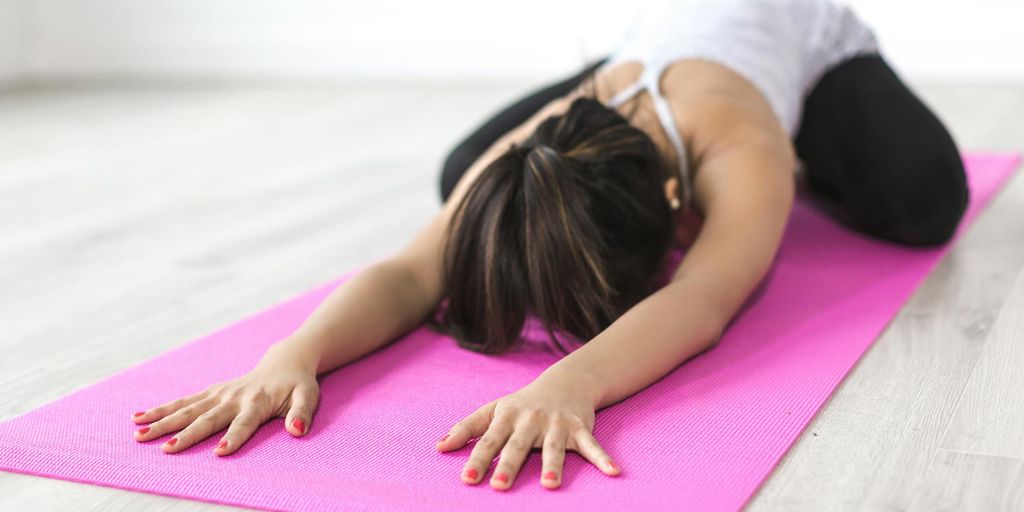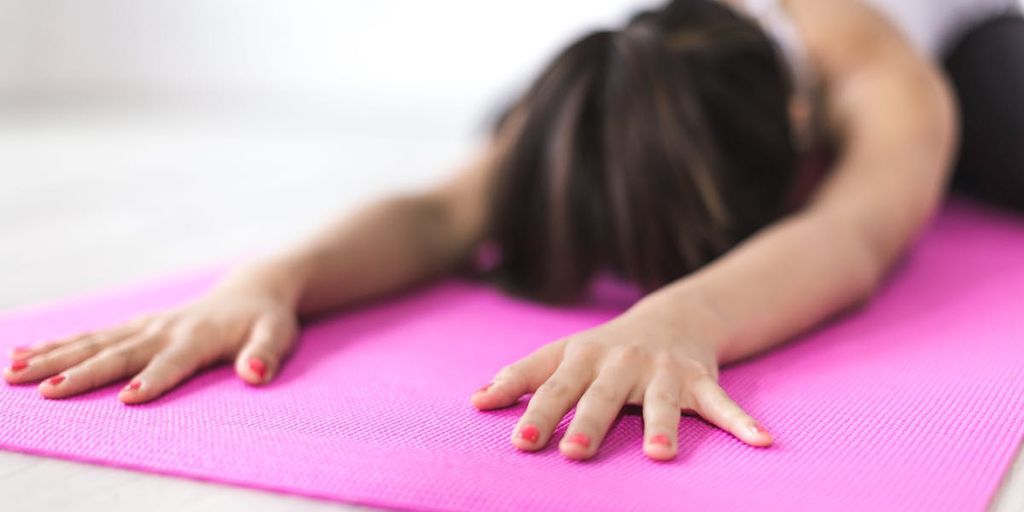
Finding the Perfect Yoga Mat Size: A Comprehensive Guide
Choosing the right yoga mat size is crucial not only for comfort but also for enhancing your yoga practice. This comprehensive guide delves into various aspects of yoga mat sizes, from standard dimensions to custom options, and how they align with different body types and yoga environments. Understanding these factors will help you make an informed decision, ensuring your yoga mat supports your practice in the most effective way.
Key Takeaways
- Understanding the right yoga mat size can significantly impact comfort and performance.
- Different yoga styles and personal space needs require consideration of varying mat sizes.
- Custom yoga mat sizes can be beneficial but come with additional cost implications.
- Choosing a yoga mat size that matches your body type can enhance your practice and comfort.
- It's essential to consider the environment (home, studio, outdoors) when selecting a yoga mat size.
Understanding the Importance of Yoga Mat Size
Impact on Comfort and Performance
Choosing the right yoga mat size is crucial for ensuring maximum comfort and optimal performance during yoga sessions. A mat that is too small can restrict movement and cause discomfort, while a mat that is too large can be cumbersome and difficult to manage.
Variations Across Different Yoga Styles
Different yoga styles require different mat sizes. For instance, dynamic styles such as Ashtanga may benefit from a slightly larger mat to accommodate more vigorous movements, whereas styles like Yin yoga might not necessitate as much space.
Personal Space Considerations
In crowded classes, having a mat that fits your personal space can prevent overlapping with others and help maintain focus and relaxation. Choosing the right size mat is essential not just for comfort but also for maintaining personal boundaries in a studio setting.
Standard Yoga Mat Sizes Explained
Understanding the standard dimensions and thickness of yoga mats can greatly enhance your practice by ensuring comfort and suitability for various yoga styles.
Dimensions and Thickness
A standard yoga mat typically measures about 24 inches in width and 68 inches in length. However, thickness can vary, typically ranging from 1/16 inch (ultra-thin) to 1/4 inch (thick). Choosing the right thickness depends on personal preference and the type of yoga you practice.
Material Differences and Their Effect on Size
The material of a yoga mat can affect its size and performance. For instance, rubber mats might offer more grip and are often thicker, while PVC mats can be thinner but provide less traction. Understanding these differences is crucial for selecting a mat that meets your needs.
How to Choose the Right Thickness
Selecting the right thickness for your yoga mat is essential for comfort and support:
- Ultra-thin mats (1/16 inch): Ideal for balance-focused practices like Ashtanga.
- Standard mats (1/8 inch): Good for general practices.
- Thick mats (1/4 inch): Best for therapeutic practices or for yogis with joint issues.
Remember, the right thickness of your yoga mat can make a significant difference in your yoga practice.
Customizing Your Yoga Mat Size
When to Consider a Custom Size
Customizing your yoga mat can be essential if standard sizes do not meet your specific needs. Consider a custom size if you find that your mat is either too small or too large for comfortable practice. This is particularly relevant for individuals who are taller or shorter than average, or those who require more space for their yoga practice.
Options for Customization
There are several ways to customize a yoga mat to better suit your needs. Options include choosing different dimensions, thicknesses, and materials. For instance, you might opt for a longer and wider mat if you are taller, or a thicker mat for additional cushioning. Customization can also involve selecting unique colors or patterns that reflect your personal style.
Cost Implications
While customizing your yoga mat offers a tailored experience, it often comes with higher costs. The price can vary significantly based on the complexity of the customization and the materials used. It's important to balance your budget with your specific needs to ensure that you are making a cost-effective decision.
The Role of Body Type in Choosing Yoga Mat Size
Matching Mat Size to Body Dimensions
Choosing the right yoga mat size is crucial for ensuring comfort and effectiveness during practice. The dimensions of the mat should correspond to the user's body size to provide adequate coverage and support. For instance, taller individuals might require longer mats, while wider mats may be better suited for those with a broader frame.
Adjustments for Height and Weight
Adjusting your yoga mat based on height and weight can significantly enhance your yoga experience. A heavier person may benefit from a thicker mat that offers more cushioning to protect the joints. Conversely, a lighter individual might prefer a thinner mat that allows for a closer connection with the floor, enhancing stability during poses.
Tips for Tall or Petite Yogis
Tall or petite yogis often face challenges in finding a mat that suits their unique body type. Here are some tips:
- Tall yogis should look for mats that are at least 72 inches long.
- Petite individuals might find standard mats too large and should consider shorter mats to avoid excess material that can be cumbersome.
- Always test the mat in a store if possible to ensure it feels right for your body dimensions and personal practice style.
Yoga Mat Size for Different Environments
Home vs. Studio: What You Need to Know
Choosing the right yoga mat dimensions is crucial for comfort and stability in your practice. Consider body size, type of yoga, portability, and budget when selecting the right mat dimensions. At home, you might prefer a larger and thicker mat for enhanced comfort, especially if space allows. In a studio, a standard-sized mat is often sufficient due to space constraints and the need for uniformity in class settings.
Outdoor Yoga Considerations
When practicing yoga outdoors, the choice of mat can greatly affect your experience. Opt for a mat that is durable and can withstand various terrains. Mats with a textured surface provide better grip on uneven or slippery surfaces, enhancing safety during your practice. Additionally, consider a mat that is easy to clean, as outdoor mats can get dirty quickly.
Travel-Friendly Yoga Mats
For yogis on the go, a travel-friendly mat is essential. Look for mats that are lightweight and can be easily folded or rolled up without taking up too much space. Some mats are designed specifically for travel, offering the right balance between portability and comfort. These mats are typically thinner but should still provide adequate cushioning for your joints.
Advanced Tips for Selecting Yoga Mat Size
Assessing Durability and Longevity
When choosing a yoga mat, it's crucial to consider its durability and longevity. Look for materials that are known for their resilience, such as natural rubber or high-grade PVC. These materials can withstand frequent use and are less likely to degrade over time.
Balancing Size with Portability
Finding the right balance between size and portability can be challenging. Opt for a mat that is lightweight yet provides ample space for your practice. A standard thickness of 4-5mm often offers a good compromise between comfort and ease of transport.
Innovations in Yoga Mat Technology
The yoga mat industry is constantly evolving, with new technologies designed to enhance your practice. Features like non-slip surfaces, improved cushioning, and eco-friendly materials are becoming more prevalent. Staying informed about these innovations can help you make a better choice for your yoga needs.
Common Mistakes When Choosing a Yoga Mat Size
Overlooking Personal Practice Style
One of the most significant errors is not considering how the size of a yoga mat can affect your practice. A mat that is too small can restrict movement, while a mat that is too large may feel cumbersome. Choose a mat that complements the type of yoga you practice; for instance, a thicker mat might be better for restorative classes, while a thinner one could be ideal for balance-focused styles.
Neglecting to Test Before Buying
It's essential to test a yoga mat before finalizing a purchase. This step is often skipped, leading to dissatisfaction due to discomfort or inadequate grip. Testing different sizes can help you find the perfect match for your body and practice needs.
Ignoring Environmental Impact
Many yogis fail to consider the environmental impact of their yoga mat choices. Opting for eco-friendly materials can significantly reduce your carbon footprint. Look for mats made from sustainable resources like natural rubber or jute, and avoid those made from PVC, which is less environmentally friendly.
Choosing the right size for your yoga mat can greatly impact your practice. Common mistakes include selecting a mat that is too small or too large, which can hinder your movements and alignment. To ensure you find the perfect fit, visit our website at Yune Yoga. We offer a wide range of sizes and styles to suit every yogi's needs. Don't let the wrong size mat disrupt your flow. Shop now and find your perfect match!
Conclusion
Choosing the right yoga mat size is essential for enhancing your practice and ensuring comfort. Throughout this guide, we've explored various factors to consider, such as material, thickness, and personal space requirements. Remember, the perfect yoga mat is one that suits your individual needs, supports your yoga style, and fits your body comfortably. Take the time to assess your preferences and try out different sizes if possible. With the right yoga mat, your practice can become more enjoyable and effective, helping you achieve a deeper sense of balance and wellness.
Frequently Asked Questions
Why is choosing the right yoga mat size important?
Selecting the appropriate size enhances comfort, prevents injuries, and improves overall performance during yoga sessions.
What are the standard dimensions of yoga mats?
Typically, standard yoga mats are about 68 inches long and 24 inches wide, with a thickness ranging from 3mm to 6mm.
How do I determine the right thickness for my yoga mat?
Consider your personal comfort, the type of yoga you practice, and the level of joint support you require. Thicker mats provide more cushioning but can be less stable for balance-focused poses.
Can I customize the size of my yoga mat?
Yes, many manufacturers offer options for customizing the dimensions and thickness of your yoga mat to suit your specific needs.
What should I consider when choosing a yoga mat for travel?
Look for lightweight, foldable mats that are easy to transport without compromising on size and comfort.
What common mistakes should I avoid when selecting a yoga mat?
Avoid mats that don't suit your practice style or body type, and always test the mat for grip, comfort, and size before purchasing.


